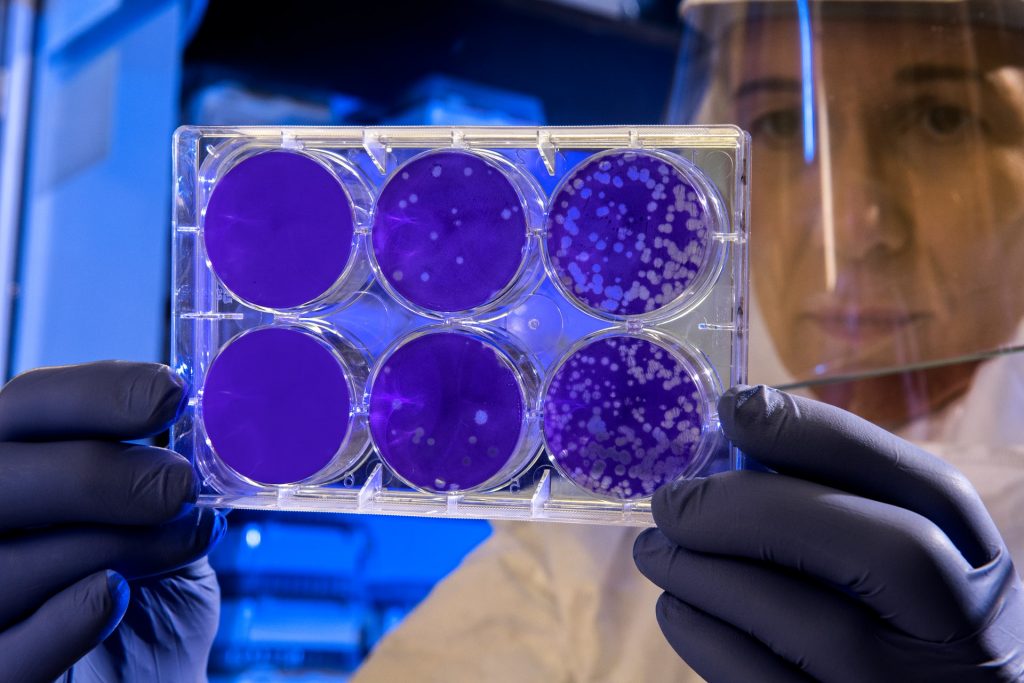 Scientists at Oregon State University have identified proteins that allow bacterial cells to receive collective communication from other cells, rather than taking its own messaging. If that means next to nothing to you, you’re not alone – let’s try to explain, shall we?
Scientists at Oregon State University have identified proteins that allow bacterial cells to receive collective communication from other cells, rather than taking its own messaging. If that means next to nothing to you, you’re not alone – let’s try to explain, shall we?
This specific type of signaling is known as quorum sensing and is vital to bacterial pathogens. Importantly, this discovery opens the path to potential new drugs to prevent infection and disrupt bacterial cells in action.
OSU Professor of Microbiology Martin Schuster and doctoral student Parker Smith study quorum sensing in the pathogen Pseudomonas aeruginosa, a gram-negative bacterium with a host of social behaviors.
- aeruginosa is a common cause of both lung and wound infections for hospital patients and individuals with weakened immune systems. It’s a model organism for quorum sensing research, as it has a well-understood signaling circuit.
“Sometimes single-celled organisms need to work together with other cells,” Schuster said. “Bacteria and other single-celled microbes can coordinate behaviors and act as a group via quorum sensing, in which cells produce and sense a small chemical signal that is shared within the population.”
A quorum is achieved when a signal is released from cells and reaches a high enough concentration in their environment. Some genes are simultaneously activated and specific group behaviors are set in motion when this happens, according to Smith.
“Bacterial infection often involves toxins that only harm the host at high levels, when produced by all bacterial cells at once,” Smith said.
In other words, it’s a herd-mentality, strength-in-numbers style of work that allows bacteria to accomplish things as a group that individual bacteria simply couldn’t.
The remaining question is why the signal produced in an individual cell isn’t sensed by the same cell before its release, which would send it into premature, solo action.
“In essence, what prevents signal ‘short-circuiting’ from happening?” Schuster said. “Our research addresses this question that’s fundamental to our understanding of quorum sensing.”
One major discovery by Schuster and Smith is that a set of proteins called antiactivators are crucial for short-circuit prevention. The protein acts as a quorum sensing “tuner” by causing cells to be less sensitive to the quorum signal.
Researchers developed bacterial strains which lacked two different types of antiactivator proteins, examining the quorum sensing behaviors in individual cells.
“We found that without antiactivators, a fraction of cells in a P. aeruginosa population engaged in ‘self-talk,’” Smith said. “In these cells, signal short-circuiting had activated quorum-sensing-dependent behaviors at all times, irrespective of cell density and without any communication with other cells. Our research shows how bacteria put the brakes on quorum sensing to achieve true communication in a group.”
These findings provide helpful background information on the engineering of cells for synthetic biology and have made major steps in discovering new antibiotics that can inhibit quorum sensing in bacterial pathogens.
Findings were published on Sunday in the Proceedings of the National Academy of Sciences.
The study was funded by the National Science Foundation.
By Ethan Hauck
Do you have a story for The Advocate? Email editor@corvallisadvocate.com

